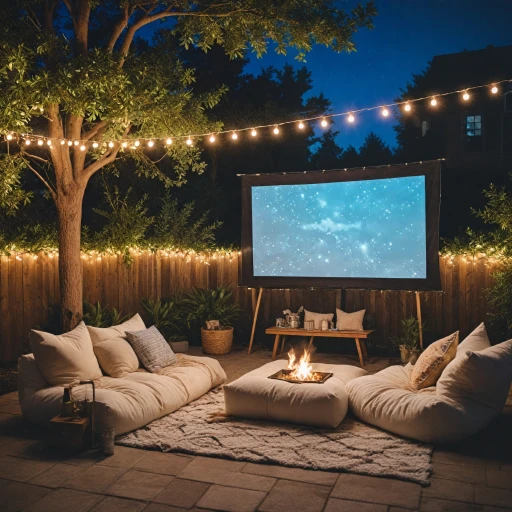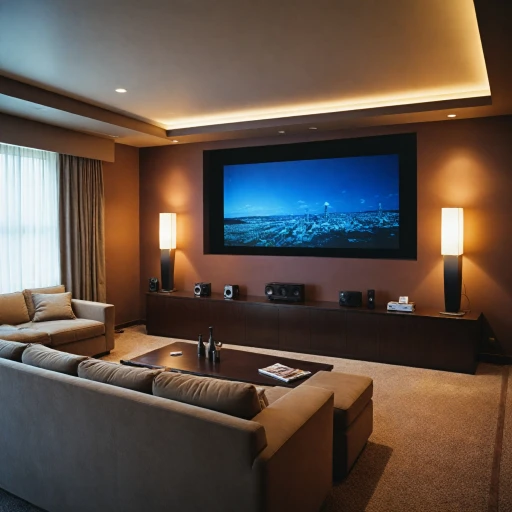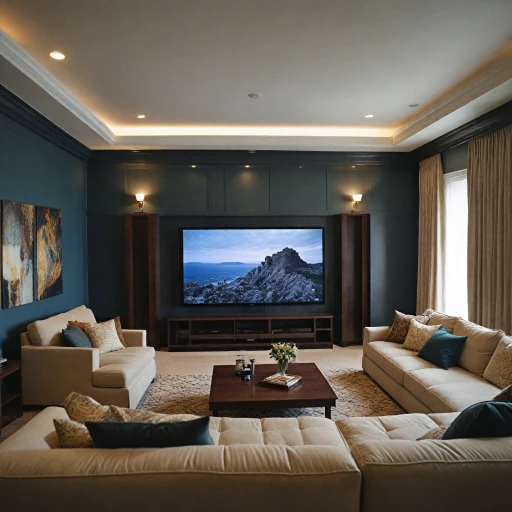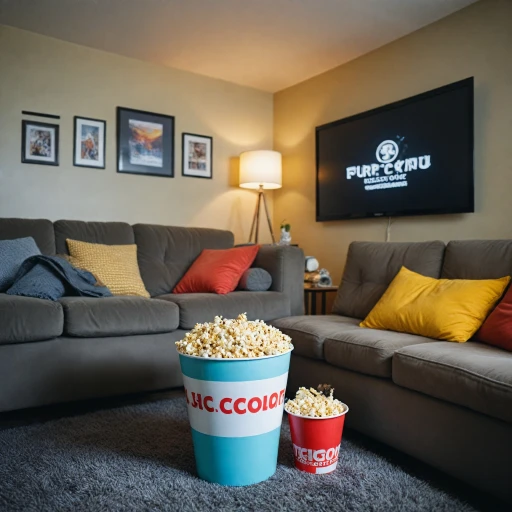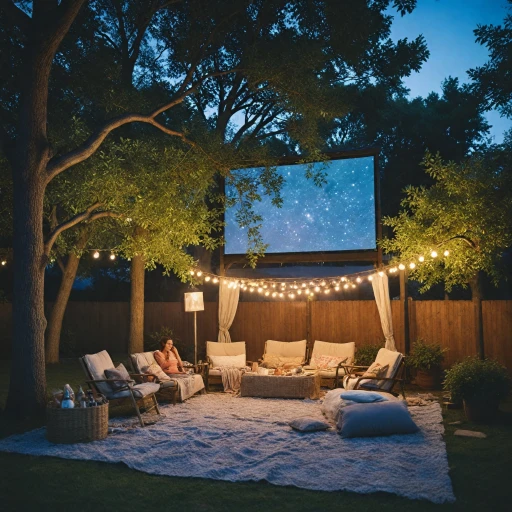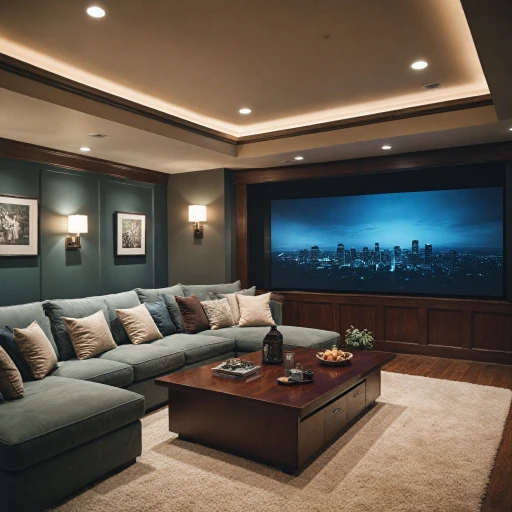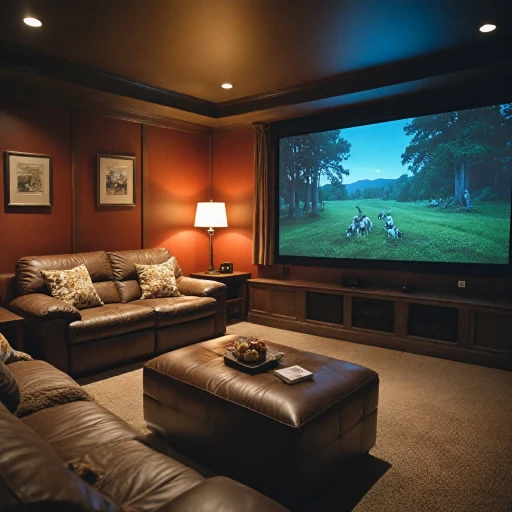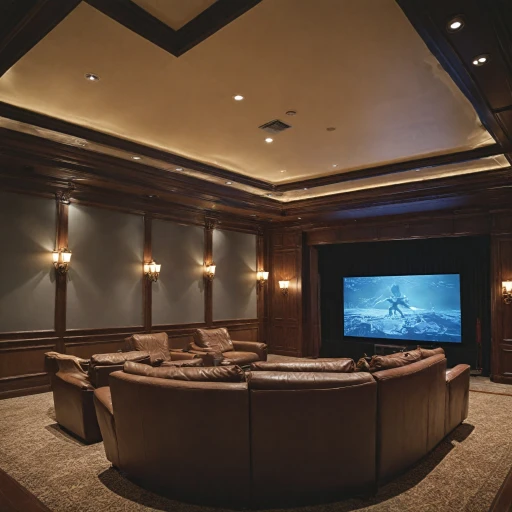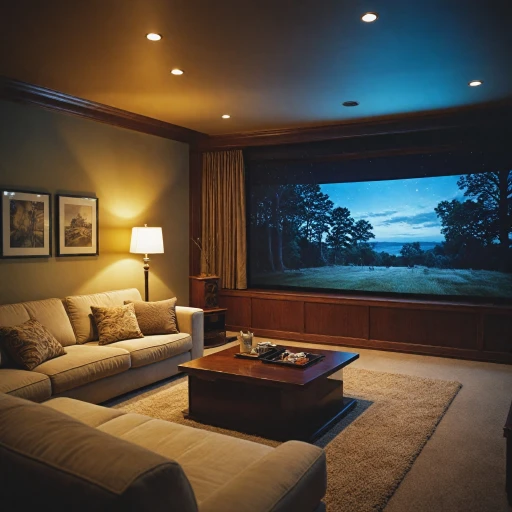Understanding Projector Specifications
Demystifying Key Specifications
Getting a handle on projector specifications is crucial when aiming for the best immersive experience with a golf simulator. Understanding these specs helps in selecting a unit that matches your simulator space and needs, enchanting not just the image quality, but the overall usage. First, let's delve into the heart of projection technology. Resolution, for instance, refers to the number of pixels that create the displayed image. More pixels generally result in clearer and crisper visuals — a pivotal feature for realistically simulating the golf course landscape. While Full HD (1920 x 1080) might suffice for some, 4K projectors offer superior image sharpness. The aspect ratio is another vital element; this refers to the shape of the image on the screen. Most simulator projectors use a 16:9 ratio suitable for HD content, while others might support different ratios based on specific needs. Make sure your aspect ratio aligns with the size and shape of your impact screen. Furthermore, the throw ratio indicates how wide an image a projector can display from a given throw distance. Short throw projectors require less distance from the screen, allowing more flexibility in smaller spaces. It's crucial to match the throw ratio with your room dimensions to ensure a projected image that fits your screen without distortion or cutoff. Moreover, consider the lumens rating to gauge brightness. More lumens mean higher brightness, an important trait if ambient light in your setup area can't be completely controlled, although even in dim scenarios, achieving optimal image brightness is essential. On the cutting edge, laser projectors typically offer improved brightness and longevity over bulb-based alternatives. Finally, factor in the projector's lens features like lens shift and zoom capability, enabling adjustments for optimal screen alignment without having to move the entire unit. This can be a game-changer when ensuring the best view and avoiding distortion. If you're new to these concepts or need more guidance, understanding the nuances of projector specifications can refine your selection criteria substantially. For those keen to delve deeper into this topic, exploring ways to enhance your projection experience can provide valuable insights and guidance.Projection Technology: DLP vs. LCD
Weighing the Pros and Cons of Different Projection Technologies
When setting up a golf simulator, choosing the right projector can significantly impact your overall experience. There are two primary projection technologies used in simulator projectors today: Digital Light Processing (DLP) and Liquid Crystal Display (LCD). Understanding their differences can help you make the best choice for your setup. DLP projectors are known for their vibrant colors and deep contrast, which can enhance the projected image quality and make greens on a golf simulator look more realistic. They often include features such as a short throw ratio, which is crucial when space is limited, as it allows the projected image to be large even when the projector is placed closer to the screen. One downside is that DLP projectors may have a higher price tag, particularly those models using laser projectors for their light source, but they offer remarkable brightness and color consistency. On the other hand, LCD projectors provide very sharp images, which is beneficial when displaying detailed visuals like a golf course. They are typically more affordable and offer a wider range of resolutions and aspect ratios to suit different screen sizes and simulator conditions. However, LCD projectors may not perform as well as DLP types in rooms with high ambient light levels. Additionally, it is important to consider features like lens shift and throw distance, especially if you plan to mount the projector or adjust the image without moving the entire projector golf configuration. Some popular options such as BenQ short throw projectors offer a good balance of affordability and quality, making them a solid choice for many golf simulators. The choice between DLP and LCD should ultimately be influenced by your specific needs and the environment in which your projector will operate. For a more detailed guide on selecting the perfect projector for your home setup, you might find this resource on choosing the perfect home theater sectional very insightful.Optimizing Image Size and Throw Distance
Optimizing Your Projector Setup for Golf Simulation
When setting up your projector for the ultimate golf simulator experience, understanding image size and throw distance is crucial. Both elements significantly impact how the projected image aligns with your impact screen, ensuring an immersive game environment.
First, let's talk about throw ratios, which determine how far from the screen your projector needs to be while still filling the desired image size. A short throw projector is often ideal for golf simulators as it allows for a large projected image even in smaller spaces. This is particularly beneficial if your setup space is limited, enabling you to enjoy high-resolution golf simulation without drastic reconfiguration.
Many users opt for models like the BenQ STi or other renowned brands known for offering both excellent short throw distances and high image quality. Laser projectors also tend to be favorable because of their superior brightness and longevity compared to traditional lamp projectors. When selecting a light source, the balance between brightness (measured in lumens) and the total throw distance is vital to maintain clarity and vividness of the projected image.
Another vital aspect to consider is the aspect ratio and resolution. Golf simulators often require dynamic aspect settings to match the screen's aspect ratio, ensuring that images don't appear stretched or distorted. Higher resolutions provide enhanced detail and realism, making every swing feel authentic.
Additionally, consider the flexibility of your projector's installation. Projectors with adjustable lens shift functions allow for greater positioning freedom, accommodating varied room layouts without compromising the image alignment. Strategically opting to mount the projector can free up floor space and protect the unit from accidental bumps during play.
In conclusion, the best golf simulator projectors will integrate the optimum throw distance, resolution, and mount options tailored to your space. For further details on specific projector models and configurations that maximize your home golf experience, check out the exploring the longest throw projectors for your home theater page for more insights.
Connectivity and Compatibility Considerations
Ensuring Seamless Integration with Your Setup
When setting up your golf simulator, connectivity and compatibility are crucial elements that can greatly influence the efficiency and functionality of your projector. Here's what you need to consider:- Input and Output Options: Modern projectors often come with a range of ports, the most common being HDMI. It's essential to check that your simulator projector supports the input types needed for your simulator setup. For instance, if your source demands a DisplayPort or USB, ensure your projector accommodates such connections.
- Wireless Connectivity: Projectors with wireless features simplify the setup by reducing cable clutter. This can be particularly beneficial in a confined simulator space where neatness matters. Wireless connectivity allows for more flexibility and easier access to streaming services.
- Compatibility with Software: Another aspect to consider is ensuring the projector is compatible with the simulator software you intend to use. This ensures image quality and performance are not compromised. Consulting the software's specifications can guide you in selecting the suitable projector.
- Mounting Setup: Consider how and where you plan to mount your projector. Short throw projectors are particularly favored for golf simulators due to their capability to produce large images from a short distance, minimizing shadows and obstructions. Confirm that your mounting setup supports the intended directional angle and throw ratio.
Budgeting for Your Projector Purchase
Factoring Budget Considerations into Your Golf Simulator Projector Choice
When purchasing a projector for your golf simulator, it's essential to factor in your budget. While there are numerous options available, understanding the key elements that influence price can help you make an informed decision without compromising on quality. First, consider the type of projection technology. DLP projectors are often priced differently compared to LCD ones. The differences in technology, such as light processing and lens systems, can significantly impact costs. Budget also plays a role in deciding between traditional lamps and laser projectors. Laser projectors typically come with a higher initial cost but offer a longer lifespan and lower maintenance. Evaluating your long-term needs and usage frequency can help determine if a laser light source is a justified investment. Examining the throw ratio is another vital consideration. Short throw projectors require particular lenses which can affect the price. Ensure that your chosen model has the correct throw distance to fill your impact screen appropriately, keeping the room size and layout in mind. Here are some budgeting tips to guide you:- Research resolution and brightness: High resolution and brightness projectors, like those with more lumens, often come at a premium, but they enhance the image quality and are especially necessary if your space isn’t completely dark.
- Assess connectivity options: While advanced connectivity features can elevate your simulator experience, they usually increase the projector's price.
- Consider durability and warranty: Projectors with extended warranties or robust light sources like those found in certain BenQ models might help you save on potential repair costs in the future.
- Check for discounts or deals on popular brands or models. Manufacturers might offer promotions during peak seasons.
Maintenance and Longevity of Projectors
Ensuring Longevity and Optimal Performance
To get the most out of your projector for a golf simulator, regular maintenance is key. This not only prolongs the life of your device but also ensures the best image quality for your simulator experience. Here are some tips to keep your projector in top shape:
- Regular Cleaning: Dust and debris can accumulate on the lens and inside the projector, affecting the image quality. Use a soft cloth to clean the lens regularly and consider using compressed air to remove dust from vents.
- Proper Ventilation: Ensure your projector has adequate airflow to prevent overheating. Overheating can shorten the lifespan of your projector's light source, especially in laser projectors.
- Check the Lamp Hours: For projectors that use lamps, keep track of the lamp hours and replace the lamp when necessary. This will maintain the brightness and clarity of the projected image.
- Lens Shift and Throw Ratio Adjustments: Regularly check and adjust the lens shift and throw ratio settings to ensure the projected image fits perfectly on your impact screen.
- Firmware Updates: Check for any firmware updates from the manufacturer, such as BenQ, to ensure your projector is running the latest software for optimal performance.
By following these maintenance tips, you can enjoy a crisp, bright image and extend the life of your projector, making it a worthwhile investment for your golf simulator setup.

